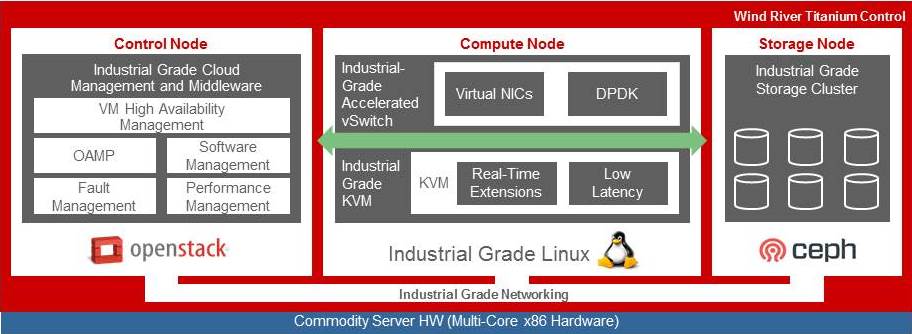Wind River targets the industrial IoT for virtualization
Wind River, Intel’s embedded software subsidiary, today (March 14) launched a platform that brings software-based management through virtualization to subsystems that now fall within the industrial Internet of Things (IIoT).
Named Titanium Control, the platform is aimed at industrial infrastructure companies and particularly targets the analysis and management of legacy control systems. These have historically been realized in hardware and were installed before the IIoT concept took root.
The idea behind the platform is simple enough. Titanium Control pulls the management of older physical and IIoT-ready controls systems into the cloud, analyzing, simulating and ultimately managing their operation through on-premise IT. Because they typically were designed and run in isolation, legacy hardware subsystems are expensive to maintain and difficult to upgrade in the context of other systems with which they interact.
Titanium Control thus aims to reduce cost, provide real-time analysis and more coherent system management through a shift from hardware-centric to software-centric control.
The platform is shown in Figure 1 (a complex diagram you can click to enlarge). As well as showing more detail about Titanium Control, the figure also shows that Wind River is looking to build confidence in its proposal by leveraging a number of open standards, and has opened up the platform to any guest OS. Open standards within Titanium Control include:
- OpenStack: a cloud computing platform primarily for infrastructure-as-a-stack implementations;
- Linux: at an industrial grade distribution; and
- Ceph: a distributed storage system.
The platform is optimized for use on Intel Xeon processors and has been pre-validated with major Intel-based server vendors.
The IIoT by degrees
There is a lot of hype around all aspects of the IoT, but Gareth Noyes, Wind River’s Chief Strategy Officer, says that his company is looking to get a gradual uptake for Titanium Control . He expects many customers to progressively extend deployment rather than dive into management-by-virtualization from Day One.
For example, he said, a company might begin using the platform for simulation only, analyzing the overall performance of their system-of-systems. It might then progress to using Titanium Control as a backup, intervening when the existing management systems failed to bring processes back on track quickly following a physical failure. And so on, until full migration.
Noyes sees this kind of progressive roll-out as again part of a confidence-building process. It needs to be remembered that many legacy physical subsystems are nevertheless mandated because they are safety-critical, meet the requirements of various standards or are enshrined in corporate best practices.
Ultimately, Titanium Control will, Noyes said, be judged on its ability to raise visibility into industrial infrastructure, make it easier to manage and upgrade, and achieve all that at lower cost.
“Then, as we look toward the greater influence of AI,” Noyes said, “we will see two things. First the creation of more ‘learning loops’ based on analytics. And second, a shift towards the use of algorithms for control processes.”
Noyes said Titanium Control has already secured a number of pre-release design wins in the medical and transportation markets as well as industrial.
